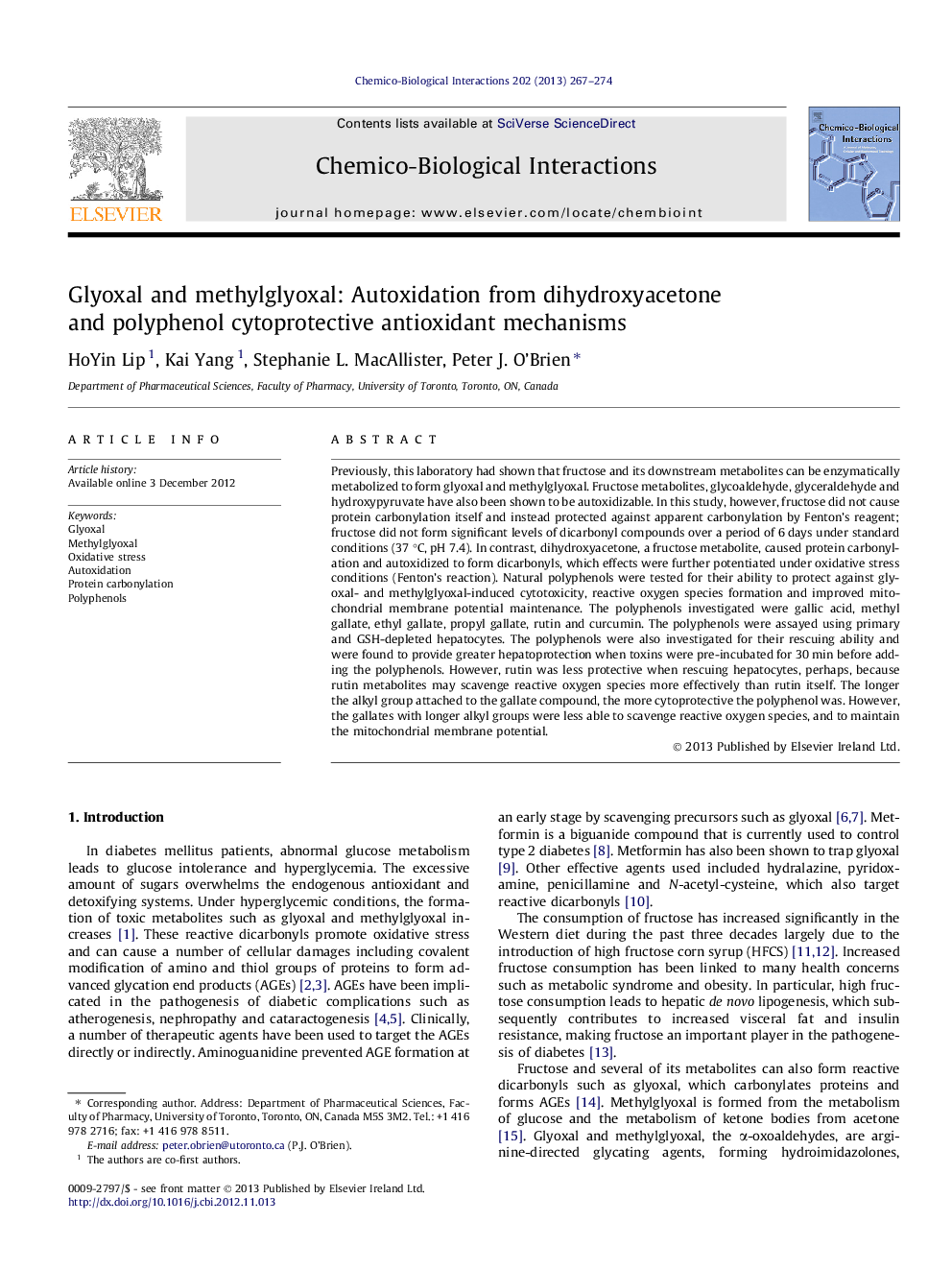| Article ID | Journal | Published Year | Pages | File Type |
|---|---|---|---|---|
| 2580665 | Chemico-Biological Interactions | 2013 | 8 Pages |
Previously, this laboratory had shown that fructose and its downstream metabolites can be enzymatically metabolized to form glyoxal and methylglyoxal. Fructose metabolites, glycoaldehyde, glyceraldehyde and hydroxypyruvate have also been shown to be autoxidizable. In this study, however, fructose did not cause protein carbonylation itself and instead protected against apparent carbonylation by Fenton’s reagent; fructose did not form significant levels of dicarbonyl compounds over a period of 6 days under standard conditions (37 °C, pH 7.4). In contrast, dihydroxyacetone, a fructose metabolite, caused protein carbonylation and autoxidized to form dicarbonyls, which effects were further potentiated under oxidative stress conditions (Fenton’s reaction). Natural polyphenols were tested for their ability to protect against glyoxal- and methylglyoxal-induced cytotoxicity, reactive oxygen species formation and improved mitochondrial membrane potential maintenance. The polyphenols investigated were gallic acid, methyl gallate, ethyl gallate, propyl gallate, rutin and curcumin. The polyphenols were assayed using primary and GSH-depleted hepatocytes. The polyphenols were also investigated for their rescuing ability and were found to provide greater hepatoprotection when toxins were pre-incubated for 30 min before adding the polyphenols. However, rutin was less protective when rescuing hepatocytes, perhaps, because rutin metabolites may scavenge reactive oxygen species more effectively than rutin itself. The longer the alkyl group attached to the gallate compound, the more cytoprotective the polyphenol was. However, the gallates with longer alkyl groups were less able to scavenge reactive oxygen species, and to maintain the mitochondrial membrane potential.
